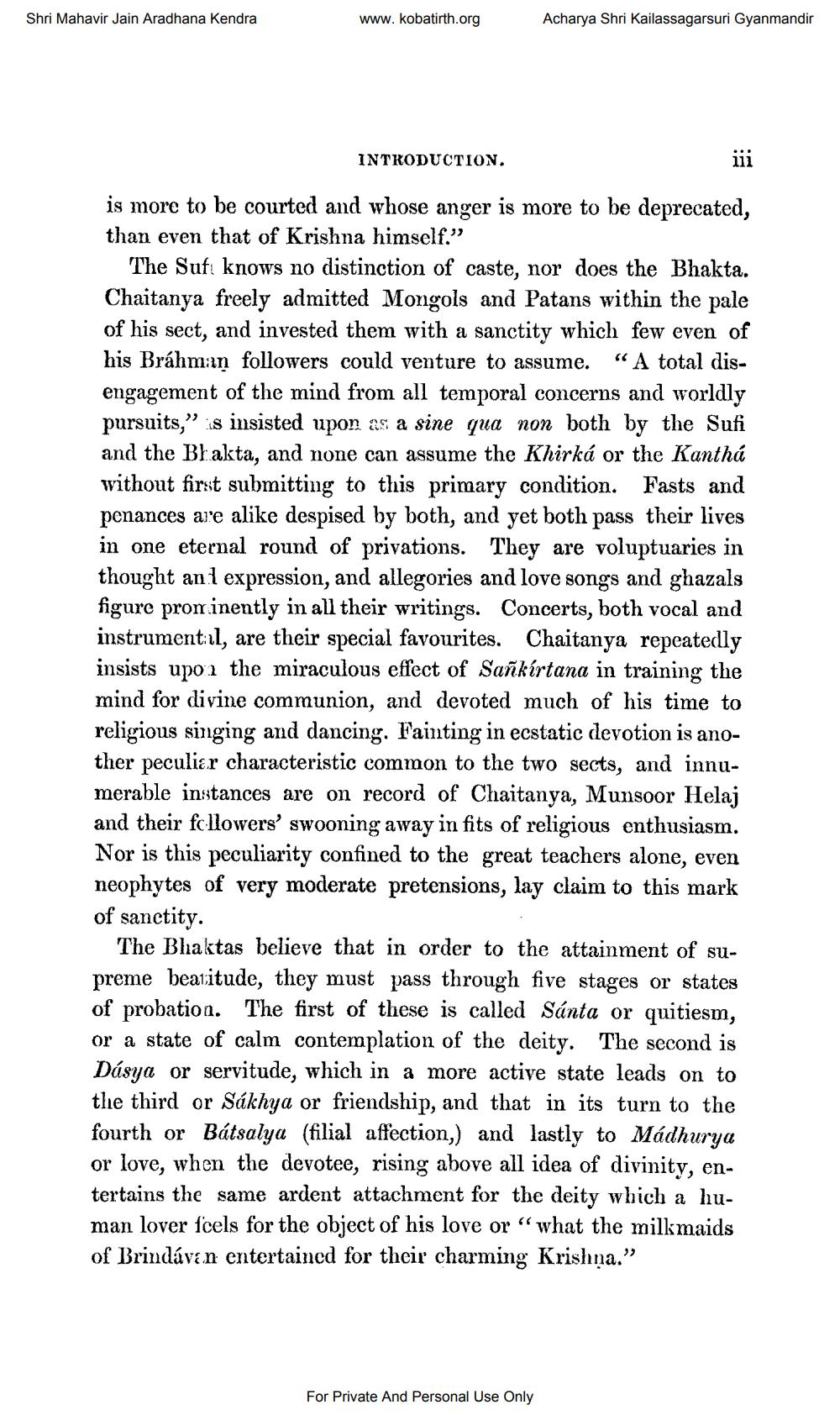Book Title: Chaitanya Chandrodaya Author(s): Kavi Karnpur, Vishvanath Shastri, Rajendralal Mittra Publisher: Bapist Mission Press View full book textPage 8
________________ Shri Mahavir Jain Aradhana Kendra www. kobatirth.org Acharya Shri Kailassagarsuri Gyanmandir INTRODUCTION. is more to be courted and whose anger is more to be deprecated, than even that of Krishna himself.” The Sufi knows no distinction of caste, nor does the Bhakta. Chaitanya freely admitted Mongols and Patans within the pale of his sect, and invested them with a sanctity which few even of his Brahman followers could venture to assume. “A total disengagement of the mind from all temporal concerns and worldly pursuits," is insisted upon as a sine qua non both by the Sufi and the Bhakta, and none can assume the Khirká or the Kanthá without first submitting to this primary condition. Fasts and penances are alike despised by both, and yet both pass their lives in one eternal round of privations. They are voluptuaries in thought an 1 expression, and allegories and love songs and ghazals figure prominently in all their writings. Concerts, both vocal and instrumentil, are their special favourites. Chaitanya repeatedly insists upon the miraculous effect of Sankirtana in training the mind for divine communion, and devoted much of his time to religious singing and dancing. Fainting in ecstatic devotion is another peculiar characteristic common to the two sects, and innumerable instances are on record of Chaitanya, Munsoor Helaj and their followers' swooning away in fits of religious enthusiasm. Nor is this peculiarity confined to the great teachers alone, even neophytes of very moderate pretensions, lay claim to this mark of sanctity. The Bhaktas believe that in order to the attainment of supreme beatitude, they must pass through five stages or states of probation. The first of these is called Sánta or quitiesm, or a state of calm contemplation of the deity. The second is Dásya or servitude, which in a more active state leads on to the third or Sákhya or friendship, and that in its turn to the fourth or Bátsalya (filial affection,) and lastly to Mádhurya or love, when the devotee, rising above all idea of divinity, entertains the same ardent attachment for the deity which a human lover fcels for the object of his love or “what the milkmaids of Brindávan entertained for their charming Krishna.” For Private And Personal Use OnlyPage Navigation
1 ... 6 7 8 9 10 11 12 13 14 15 16 17 18 19 20 21 22 23 24 25 26 27 28 29 30 31 32 33 34 35 36 37 38 39 40 41 42 43 44 45 46 47 48 49 50 51 52 53 54 55 56 57 58 59 60 61 62 63 64 65 66 67 68 69 70 71 72 73 74 75 76 77 78 79 80 81 82 ... 294
